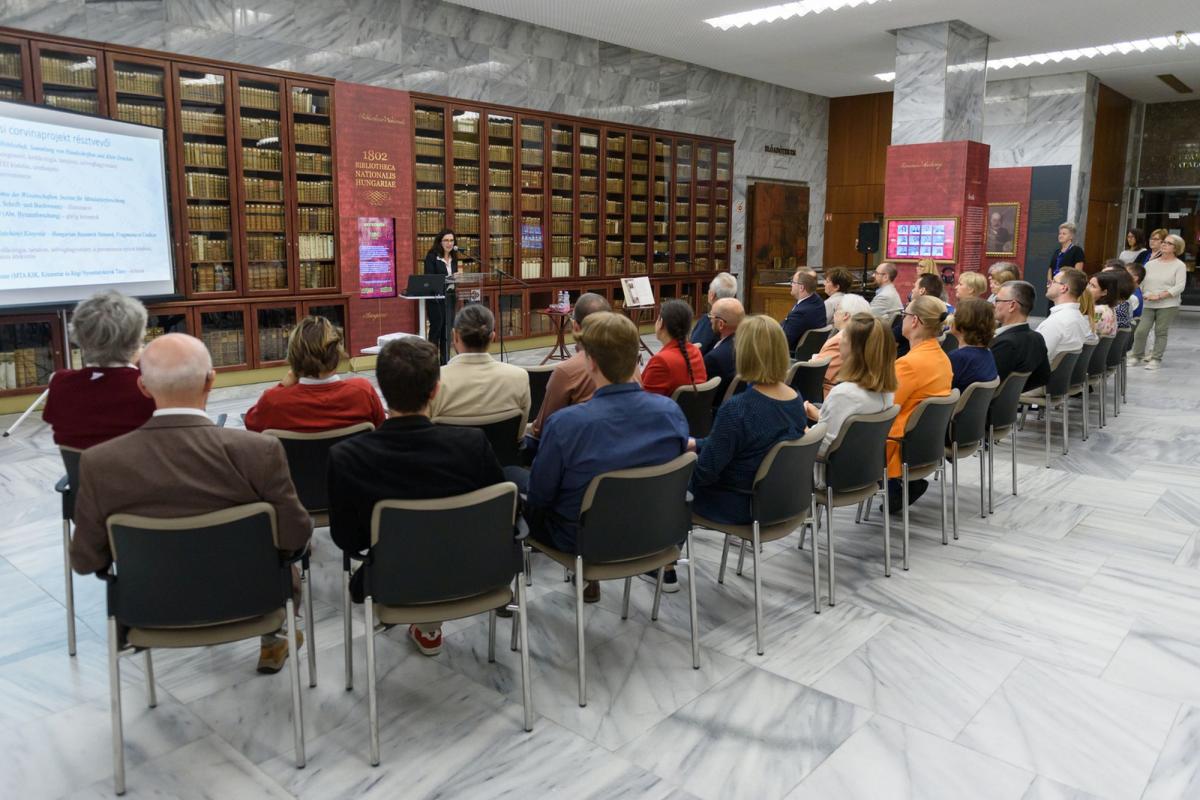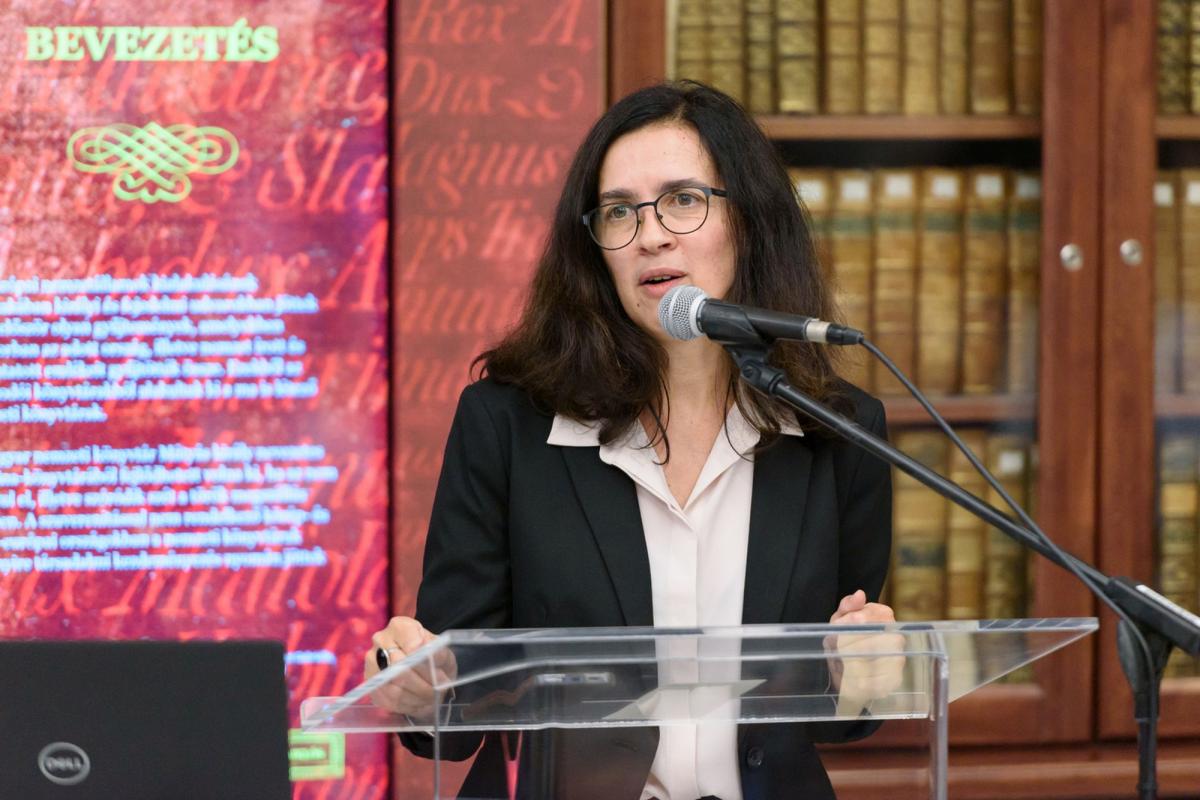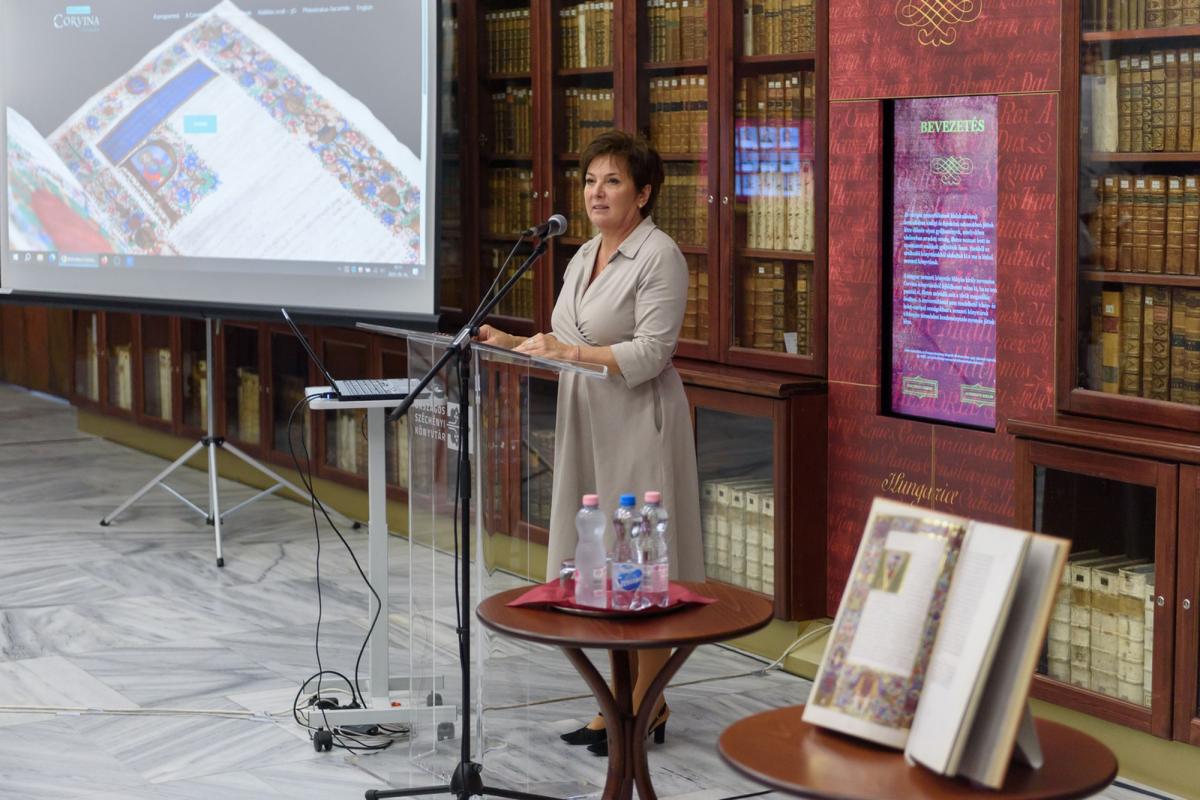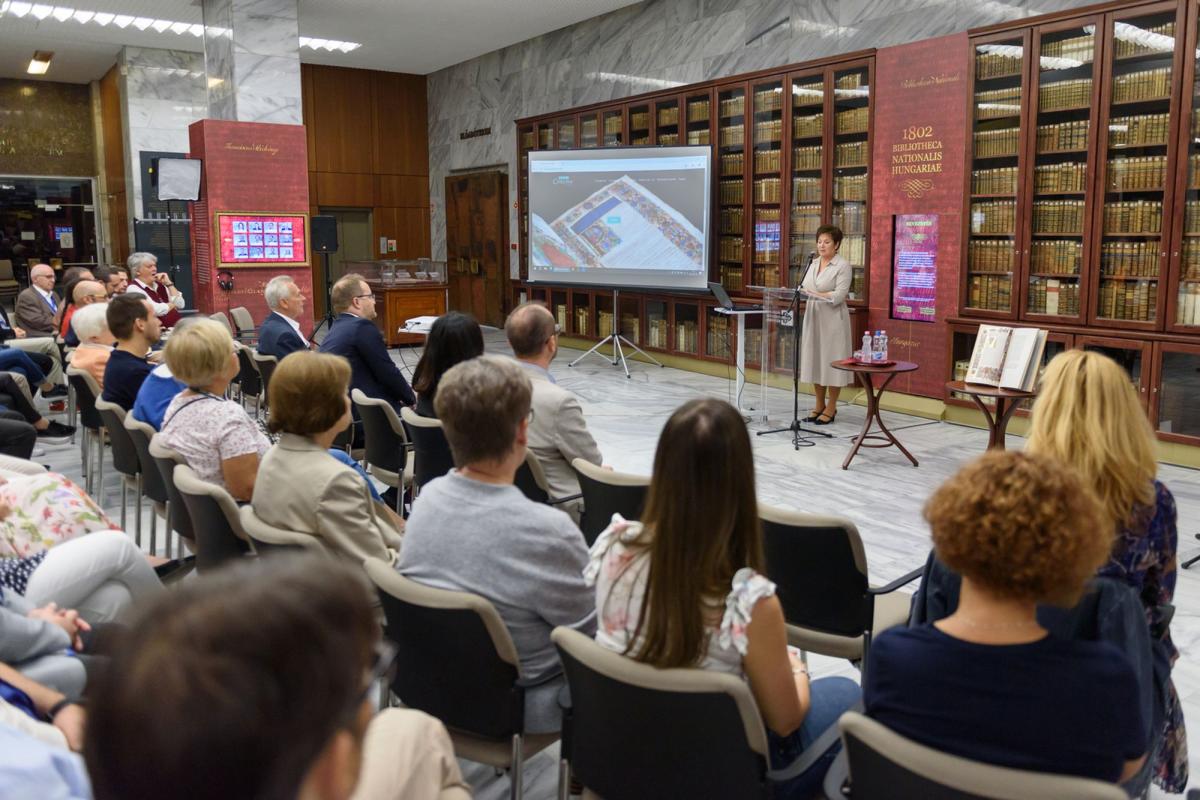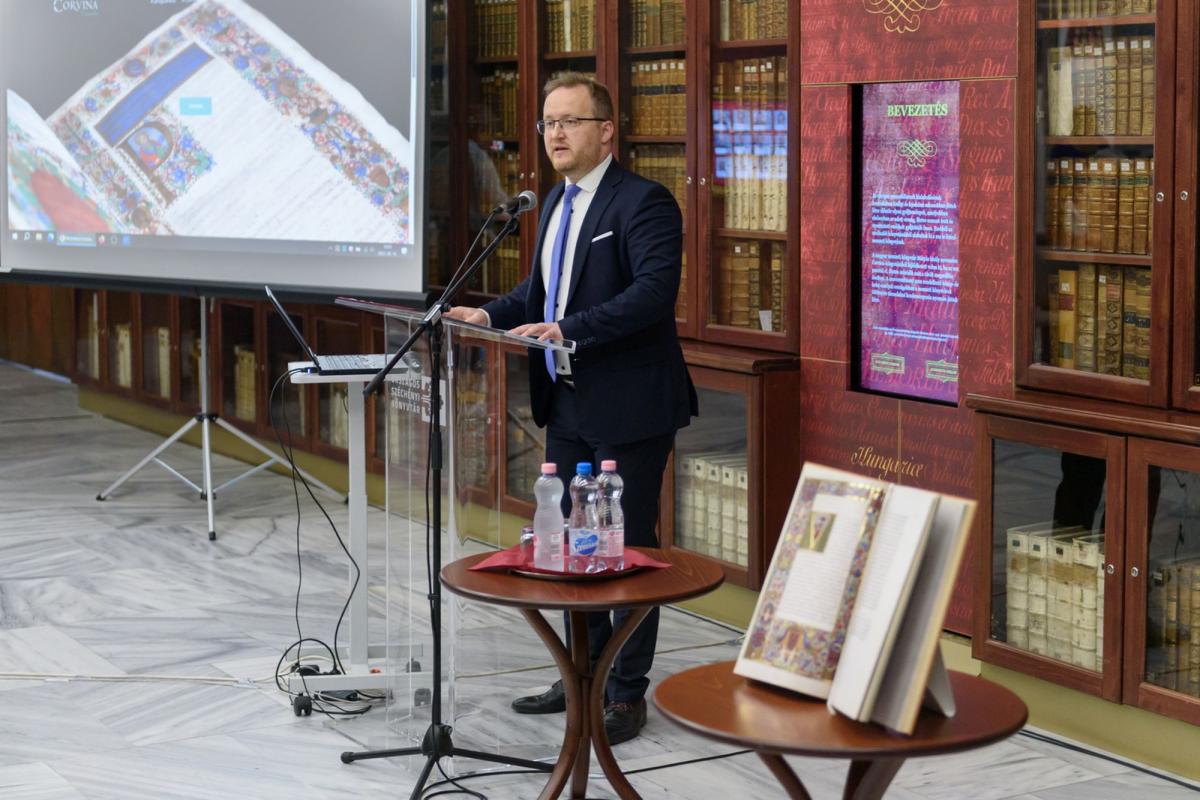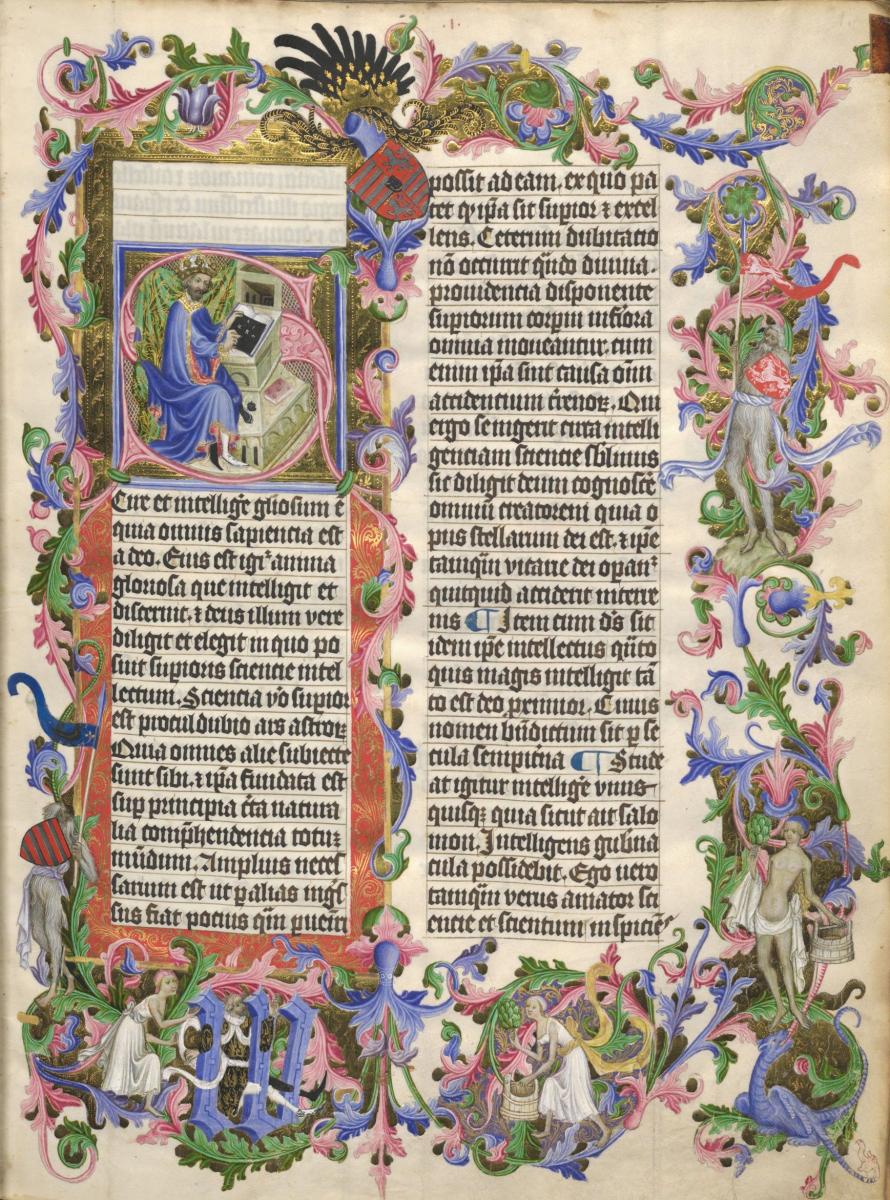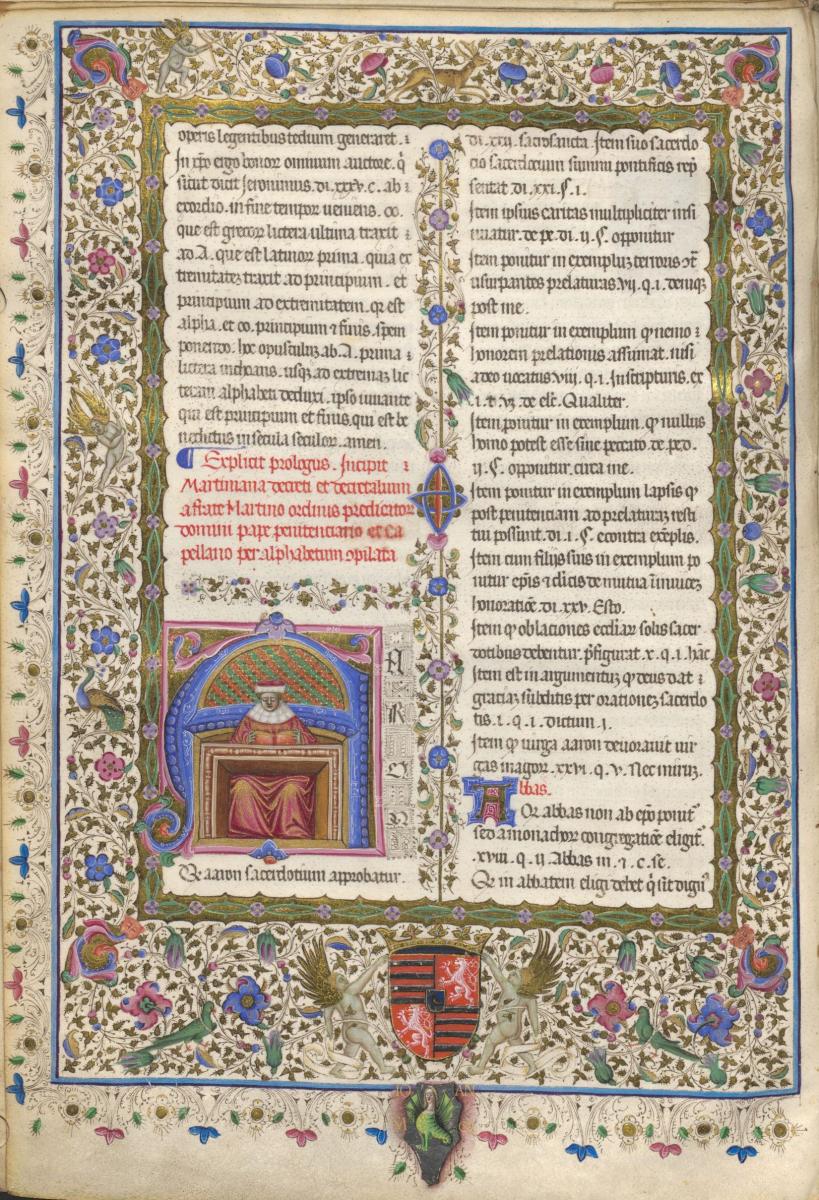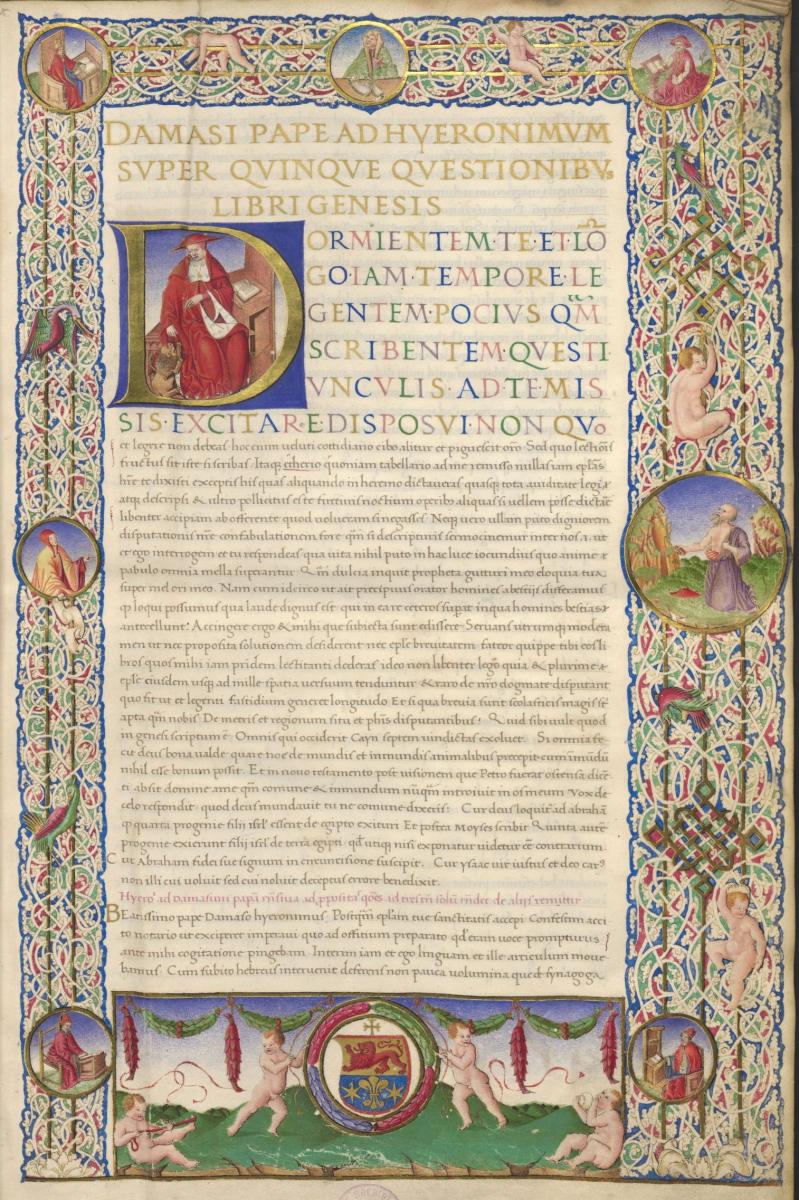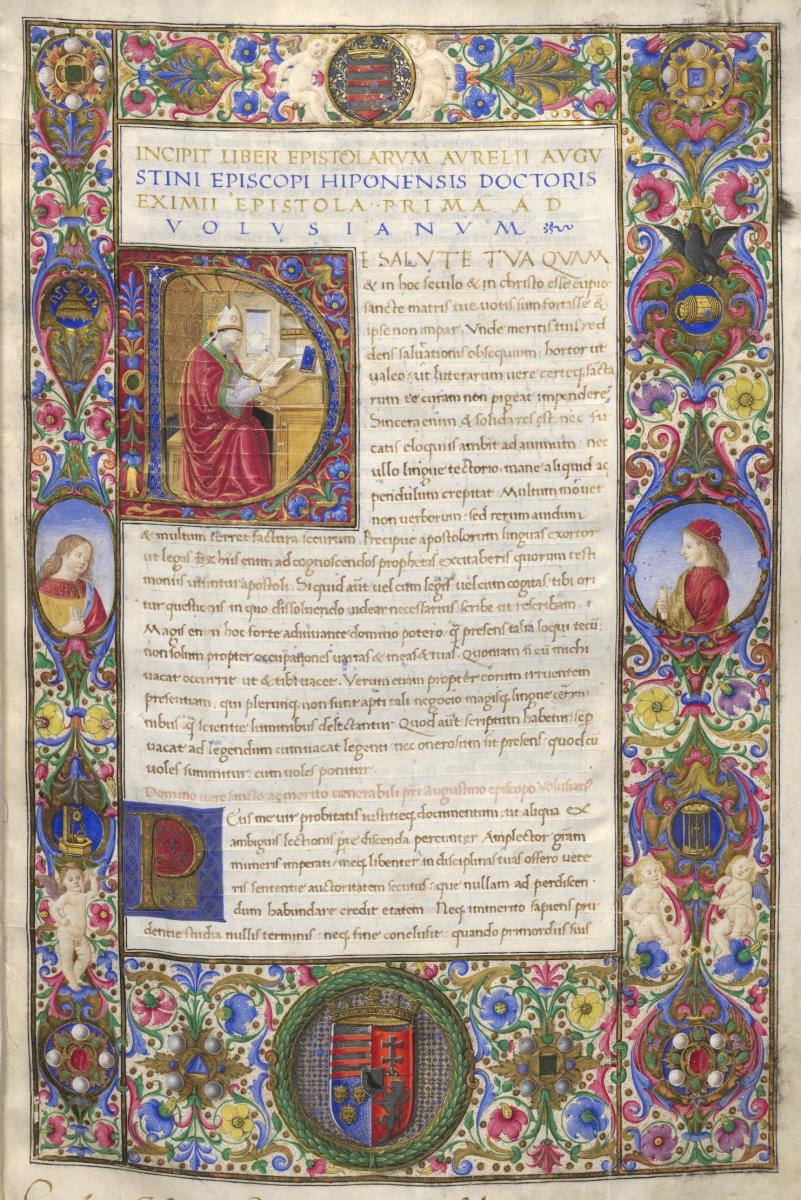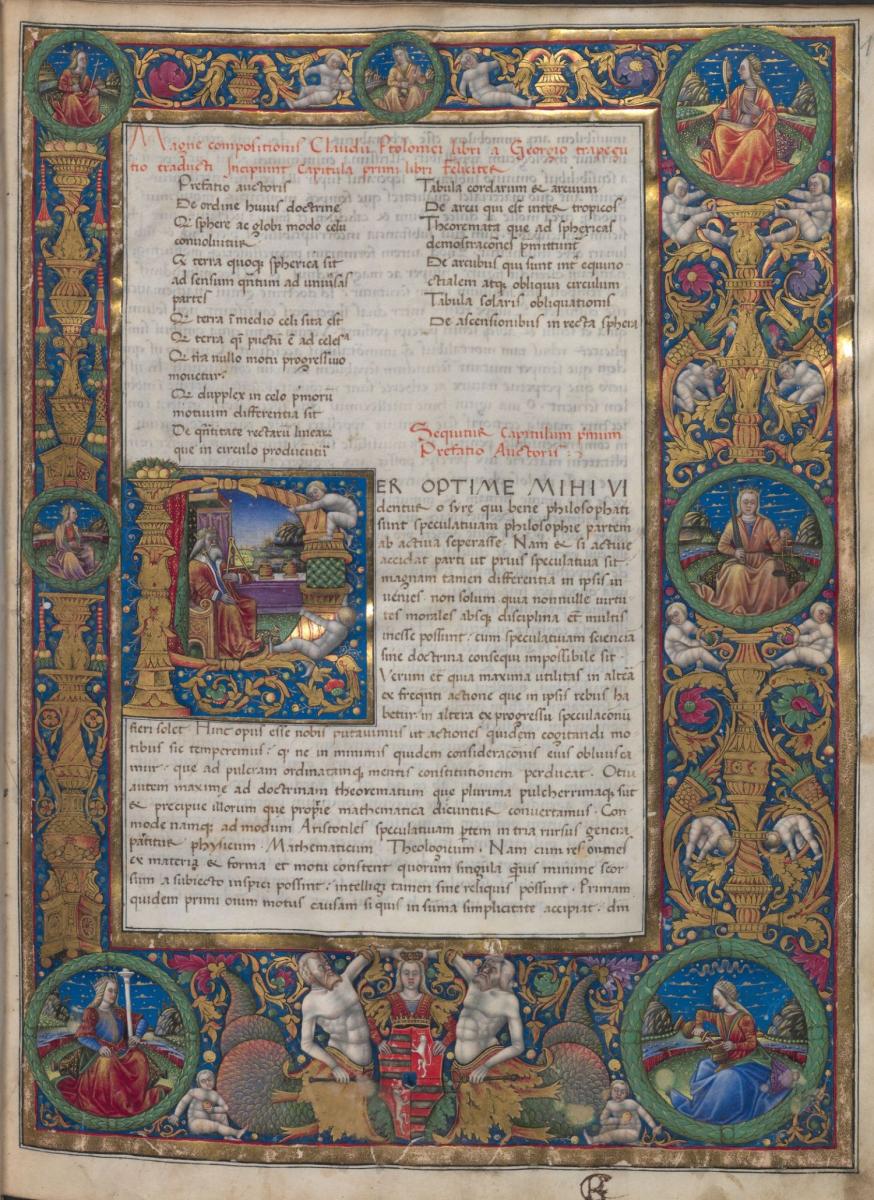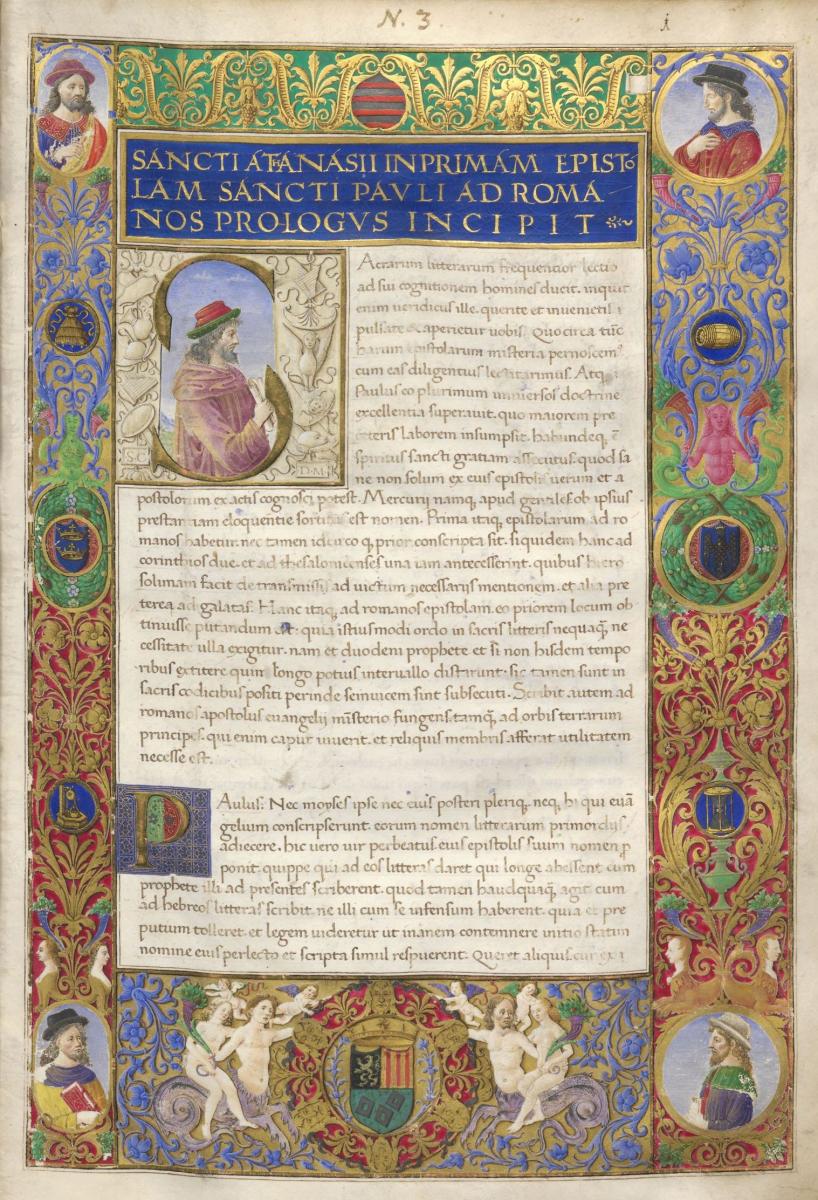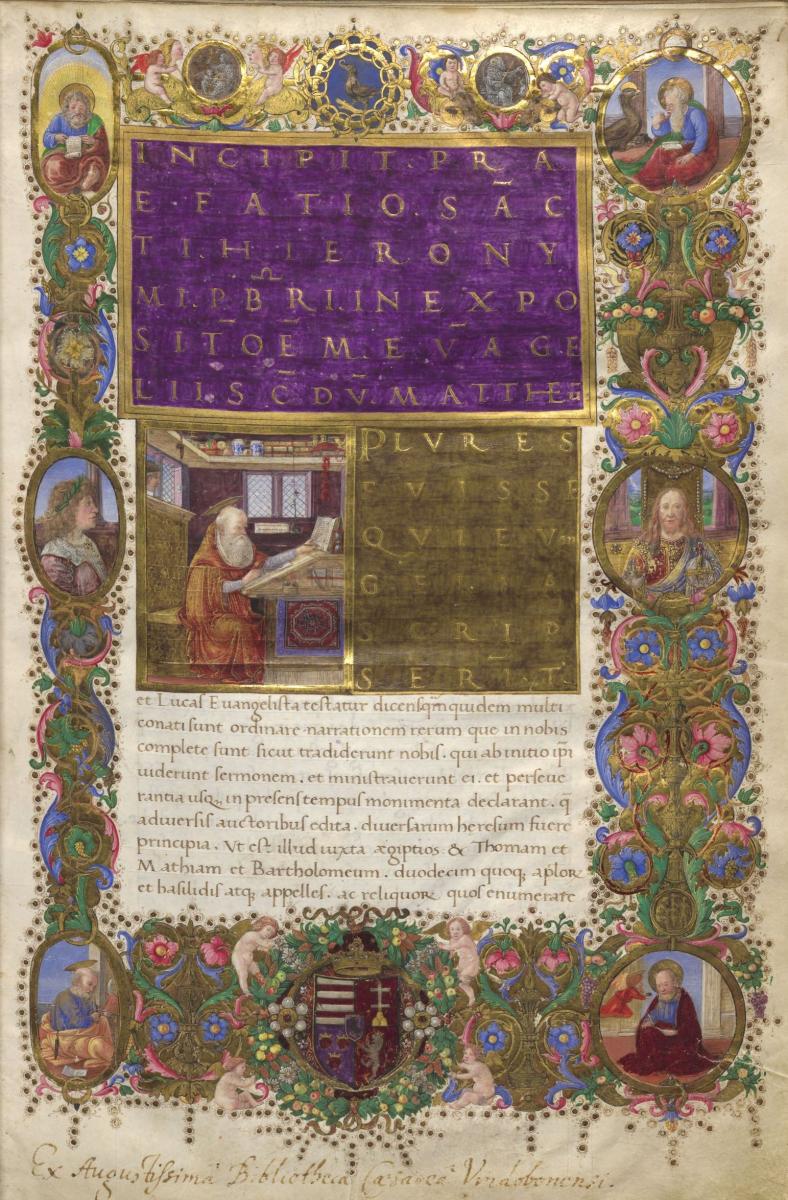
+40 Corvinas: The digital collection of the National Library enriched with new treasures
On Tuesday, 16th September 2025 at 10:00 AM the National Széchényi Library (OSZK) held a ceremonial press conference to announce the donation of forty digitalized Corvinas from the Austrian National Library. Thanks to this contribution, the majority of the surviving Corvinas can now be accessed online by researchers and enthusiasts alike via the Bibliotheca Corvina Virtualis website.
The ceremonial event took place in the Founders' Hall on the 6th floor of the OSZK. Director-General Dávid Rózsa delivered the opening address, followed by a keynote speech from Magdolna Závogyán, State Secretary for Culture at the Ministry of Culture and Innovation. Afterwards, a professional lecture was given by Edina Zsupán, head of the HUN-REN–OSZK Fragmenta et Codices Research Group.
The Corvina Library was the renowned collection of King Matthias Hunyadi (1458–1490), and was considered the first Renaissance royal court library north of the Alps and outside Italy. The volumes, with their distinctive bindings and heraldic decorations, formed a unified and representative collection assembled in the final years of King Matthias’s reign. Although the exact size of the library is unknown, it is believed to have included up to 2000 volumes, mostly manuscript codices with a smaller number of printed books. The collection was built both from Italian orders and from the codex-making workshop of the royal court in Buda, and also incorporated older books from various former owners.
The main platform for presenting the digitalized Corvinas is the Bibliotheca Corvina Virtualis website, originally launched in 2002 and revamped in 2018. The collecting gained a renewed momentum in 2022, thanks to an initiative by Director-General Dávid Rózsa. At that time only 68 Corvinas were available on the site; today, that number has grown to 170. Each digitalized codex is accompanied by modern academic descriptions in both Hungarian and English. The editor-in-chief of the website is Edina Zsupán.
The donation of forty Corvinas by the ÖNB is of particular significance, as the Austrian National Library holds the largest Corvina collection in the world. In the early 16th century, Viennese humanists such as Johannes Gremper, Johannes Cuspinianus, and Johannes Brassicanus played key roles in transferring many valuable codices from Buda to Vienna, saving them from destruction during the Ottoman conquest. Among these is the famous Philostratos Corvina, acquired by Gremper from King Vladislaus II in 1513. The efforts of these Viennese scholars helped preserve the classical and Byzantine works from the Corvina Library, as well as the writings of the Christian Church Fathers, introducing them to the European academic consciousness.
The newly donated digital treasures were created as part of a joint Austrian–Hungarian research project involving experts from the ÖNB, the Austrian Academy of Sciences, and the NSZL. On the Hungarian side, Edina Zsupán and bookbinding historian Marianne Rozsondai are participating in the project. The research will culminate in a detailed catalogue, to be published as part of both the Supplementum Corvinianum of NSZL series and as an electronic publication by the ÖNB.
At the press conference, Director-General Dávid Rózsa emphasized that the Corvinas serve as cultural milestones, transmitting humanity’s accumulated knowledge and the legacy of humanism. The forty codices now made available through Bibliotheca Corvina Virtualis are accessible to all, and the long-term goal of the project is to achieve a virtual reconstruction of the royal library.
In her speech, Magdolna Závogyán stressed that this heritage is now accessible to everyone, anytime, anywhere. She stated that the digitalization programme of the national library opens up a new world, one in which the written treasures forming the foundation of our culture are available with equal access for all. She described the 223-year-old NSZL as a continuation of the intellectual legacy of the Corvina Library.
In her professional lecture, Edina Zsupán noted that the forty Corvinas themselves represent the scale of a medieval library. The aim of the research is to place these manuscripts within the broader context of Hungarian and European cultural history. The project includes up-to-date scientific descriptions, all accessible via the Corvina website of NSZL.


